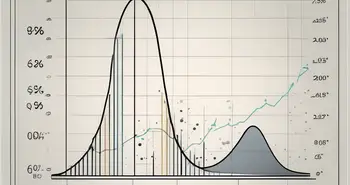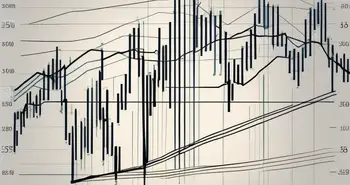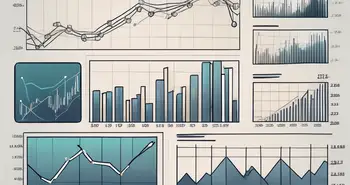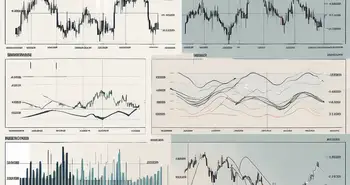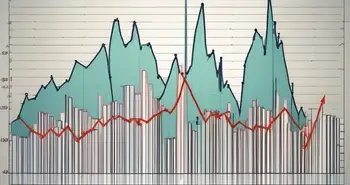A Comprehensive Guide to the Standard Deviation Trading Strategy
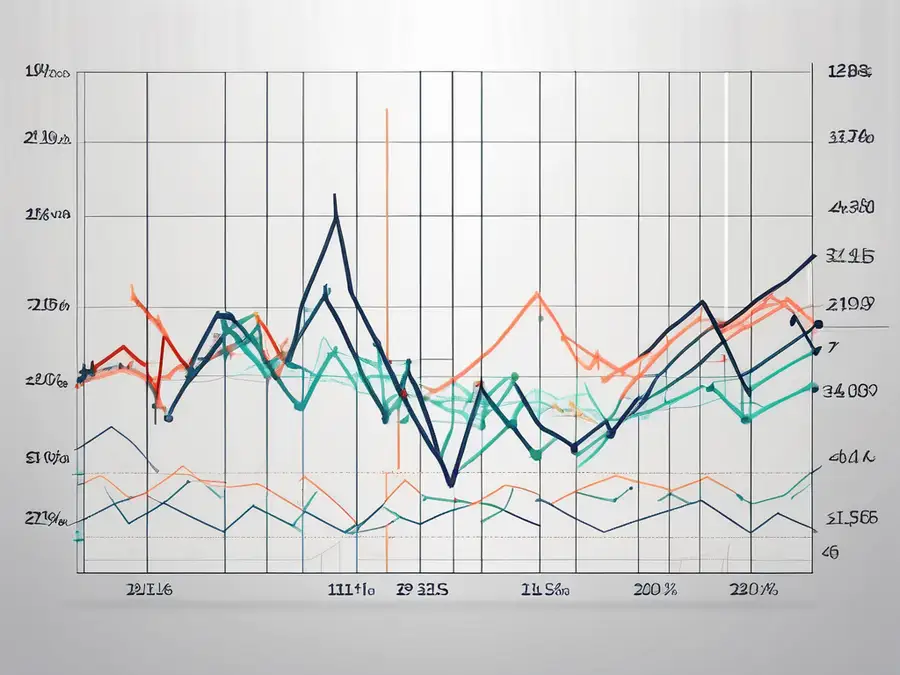
As an experienced trader, I want to share with you a comprehensive guide to the standard deviation trading strategy. Standard deviation is a powerful tool that can help you analyze market volatility and make more informed trading decisions. In this guide, I will walk you through the basics of standard deviation, the components of the trading strategy, how to build your own strategy, and important aspects of risk management. By the end of this article, you'll have a solid understanding of how to utilize standard deviation in your trading approach.
Understanding the Basics of Standard Deviation
Let's start with the fundamentals of standard deviation. To put it simply, standard deviation measures the dispersion of data points from the mean. In the context of trading, it helps us gauge the volatility of a financial instrument or a market. The higher the standard deviation, the more volatile the market is, and vice versa. By understanding standard deviation, we can better anticipate price movements and identify potential trading opportunities.
What is Standard Deviation?
Standard deviation is a statistical calculation that quantifies the amount of variability or dispersion in a dataset. In trading, it allows us to measure the degree of volatility in a particular market. A high standard deviation indicates significant price fluctuations, while a low standard deviation suggests less volatility and a more stable market.
When we calculate standard deviation, we first find the mean (average) of the dataset. Then, for each data point, we subtract the mean and square the result. These squared differences are then summed up and divided by the number of data points. Finally, we take the square root of this value to get the standard deviation.
For example, let's say we have a dataset of daily returns for a stock over the past month. We calculate the mean return and then find the difference between each daily return and the mean. We square these differences, sum them up, divide by the number of data points, and take the square root to get the standard deviation. This value tells us how much the daily returns deviate from the average return.
Importance of Standard Deviation in Trading
Standard deviation is a crucial tool in trading as it helps us assess market conditions and manage risk. By analyzing the standard deviation of price movements, we can identify periods of high volatility and adjust our trading strategy accordingly.
For example, if we observe a high standard deviation in a particular market, it indicates that prices are fluctuating significantly. This information can be valuable for day traders who thrive on volatility and seek to profit from short-term price movements. On the other hand, if we see a low standard deviation, it suggests a more stable market with less price fluctuation. This may be suitable for long-term investors who prefer a less risky approach.
Furthermore, standard deviation provides insights into potential profit targets and stop-loss levels, enhancing our overall decision-making process. By setting profit targets based on the standard deviation, we can aim for realistic and achievable goals. Similarly, stop-loss levels can be determined by considering the standard deviation to protect against excessive losses.
It's important to note that standard deviation should not be used in isolation but in conjunction with other technical indicators and analysis methods. By combining various tools, traders can gain a more comprehensive understanding of market dynamics and make well-informed trading decisions.
Components of the Standard Deviation Trading Strategy
Now that we've covered the basics, let's delve into the key components of the standard deviation trading strategy.
Key Indicators in Standard Deviation Trading
When implementing the standard deviation trading strategy, there are several indicators you should consider. Bollinger Bands, for example, use standard deviation to create dynamic price channels that can help identify entry and exit points. Moving averages can also be combined with standard deviation to generate reliable signals. By utilizing these indicators, you'll have a more comprehensive view of market trends and potential trading opportunities.
Interpreting Standard Deviation Values
As a trader, it's essential to understand how to interpret standard deviation values. A higher standard deviation indicates greater price volatility and the potential for larger price movements. Conversely, a lower standard deviation suggests a more stable market with smaller price swings. By monitoring standard deviation values over time, you can identify significant shifts in market conditions and adjust your trading strategy accordingly.
Building Your Standard Deviation Trading Strategy
Now that you have a solid understanding of the components, let's explore how to build your own standard deviation trading strategy.
Setting Up Your Trading Chart
The first step in building your standard deviation trading strategy is to set up your trading chart. Choose a timeframe that aligns with your trading goals and preferences. It's recommended to use a longer timeframe, such as daily or weekly, to filter out short-term noise and focus on the overall trend. Once you've selected your timeframe, add the appropriate indicators, including Bollinger Bands and moving averages, to your chart.
Determining Your Entry and Exit Points
Once your trading chart is set up, it's time to determine your entry and exit points. By combining standard deviation with other technical analysis tools, you can identify potential entry points when prices deviate significantly from the mean. Similarly, you can use standard deviation to set profit targets and stop-loss levels. Remember, thorough analysis and a disciplined approach are crucial for success in trading.
As an expert trader, I want to share a personal story to emphasize the importance of using standard deviation in your trading strategy. A few years ago, I was trading a volatile currency pair without considering standard deviation. I experienced substantial losses due to unexpected market movements. Since then, I integrated standard deviation into my trading approach, allowing me to better manage risk and capitalize on favorable trading opportunities. It has made a significant difference in my trading performance.
Risk Management in Standard Deviation Trading
Now that we've covered the strategy components, it's essential to address risk management in standard deviation trading.
Understanding the Risks
While standard deviation can help us analyze market volatility, trading always carries inherent risks. It's crucial to acknowledge the potential for losses and implement risk management strategies. Set realistic profit targets and stop-loss levels based on your analysis. Additionally, consider using position sizing techniques to limit exposure and diversify your portfolio to minimize overall risk.
Strategies for Risk Mitigation
To mitigate risk, consider incorporating risk management techniques into your standard deviation trading strategy. One effective approach is to use trailing stops, which automatically adjust stop-loss levels as the trade moves in your favor. Another strategy is to maintain a disciplined approach and avoid impulsive trading decisions. By implementing these risk mitigation strategies, you can protect your capital and increase your chances of long-term success.
Advantages and Disadvantages of Standard Deviation Trading
As with any trading strategy, standard deviation trading has its advantages and disadvantages. Let's explore them in detail.
Benefits of Using Standard Deviation in Trading
Standard deviation provides valuable insights into market volatility and helps us identify potential trading opportunities. By incorporating standard deviation into your strategy, you can make more informed decisions and minimize the impact of unexpected price movements. It also provides a systematic approach to trading, reducing emotional bias and increasing consistency.
Potential Drawbacks and How to Overcome Them
While standard deviation is a powerful tool, it's important to be aware of its limitations. One potential drawback is that standard deviation is based on historical price data, making it less effective in predicting future market conditions. Additionally, extreme market events, such as black swan events, may challenge the accuracy of standard deviation calculations. To overcome these limitations, it's crucial to combine standard deviation with other technical analysis tools and to adapt your strategy as market conditions evolve.
FAQ
What is standard deviation?
Standard deviation is a statistical measure that quantifies the amount of variability or dispersion in a dataset. In trading, it helps us gauge the volatility of a financial instrument or a market.
How is standard deviation useful in trading?
Standard deviation is useful in trading as it allows us to analyze market volatility, identify potential trading opportunities, set profit targets and stop-loss levels, and manage risk effectively.
What indicators are commonly used with standard deviation in trading?
Some common indicators used with standard deviation in trading include Bollinger Bands, moving averages, and other trend-following or mean-reversion indicators.
How can I minimize risks when trading with standard deviation?
To minimize risks when trading with standard deviation, it's important to set realistic profit targets and stop-loss levels, implement risk management strategies such as trailing stops, maintain a disciplined approach, and diversify your portfolio.
Are there any limitations to using standard deviation in trading?
While standard deviation is a valuable tool, it has limitations. It is based on historical data and may be less effective in predicting future market conditions. Additionally, extreme market events may challenge the accuracy of standard deviation calculations.
Now that you have a comprehensive understanding of the standard deviation trading strategy, it's time to apply what you've learned in your own trading endeavors. Remember to continually refine your strategy, stay disciplined, and adapt to changing market conditions. Happy trading!
Ready to take your standard deviation trading strategy to the next level? Experience the future of investing with Morpher, the revolutionary trading platform that leverages blockchain technology for zero fees, infinite liquidity, and a unique trading experience. Whether you're looking to trade stocks, cryptocurrencies, forex, or even unconventional markets, Morpher's fractional investing, short selling capabilities, and up to 10x leverage have got you covered. Sign up now to gain full control over your investments with the Morpher Wallet and receive your free sign-up bonus. Sign Up and Get Your Free Sign Up Bonus and start transforming your trading journey today!

Disclaimer: All investments involve risk, and the past performance of a security, industry, sector, market, financial product, trading strategy, or individual’s trading does not guarantee future results or returns. Investors are fully responsible for any investment decisions they make. Such decisions should be based solely on an evaluation of their financial circumstances, investment objectives, risk tolerance, and liquidity needs. This post does not constitute investment advice.

Painless trading for everyone
Hundreds of markets all in one place - Apple, Bitcoin, Gold, Watches, NFTs, Sneakers and so much more.

Painless trading for everyone
Hundreds of markets all in one place - Apple, Bitcoin, Gold, Watches, NFTs, Sneakers and so much more.

